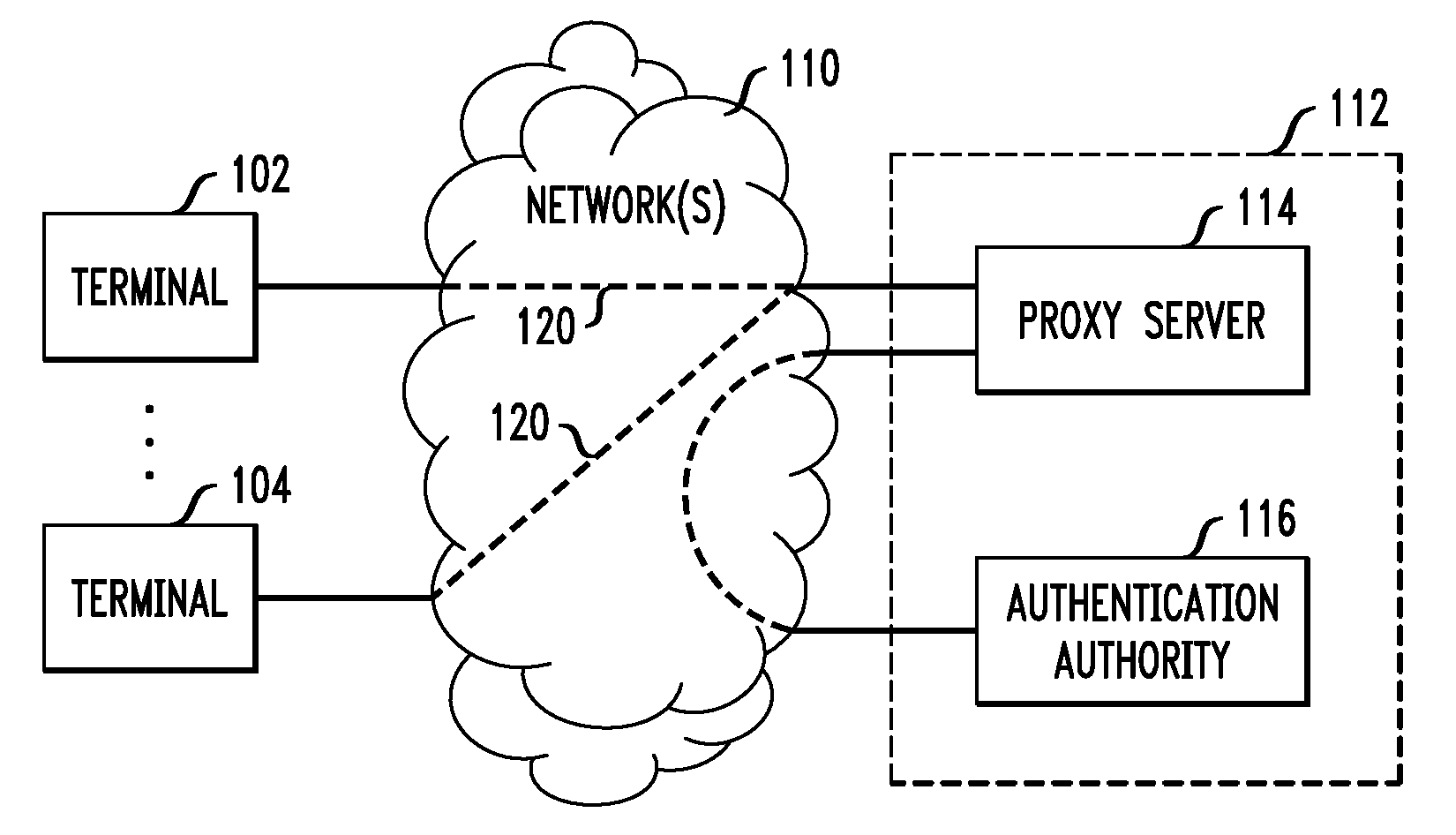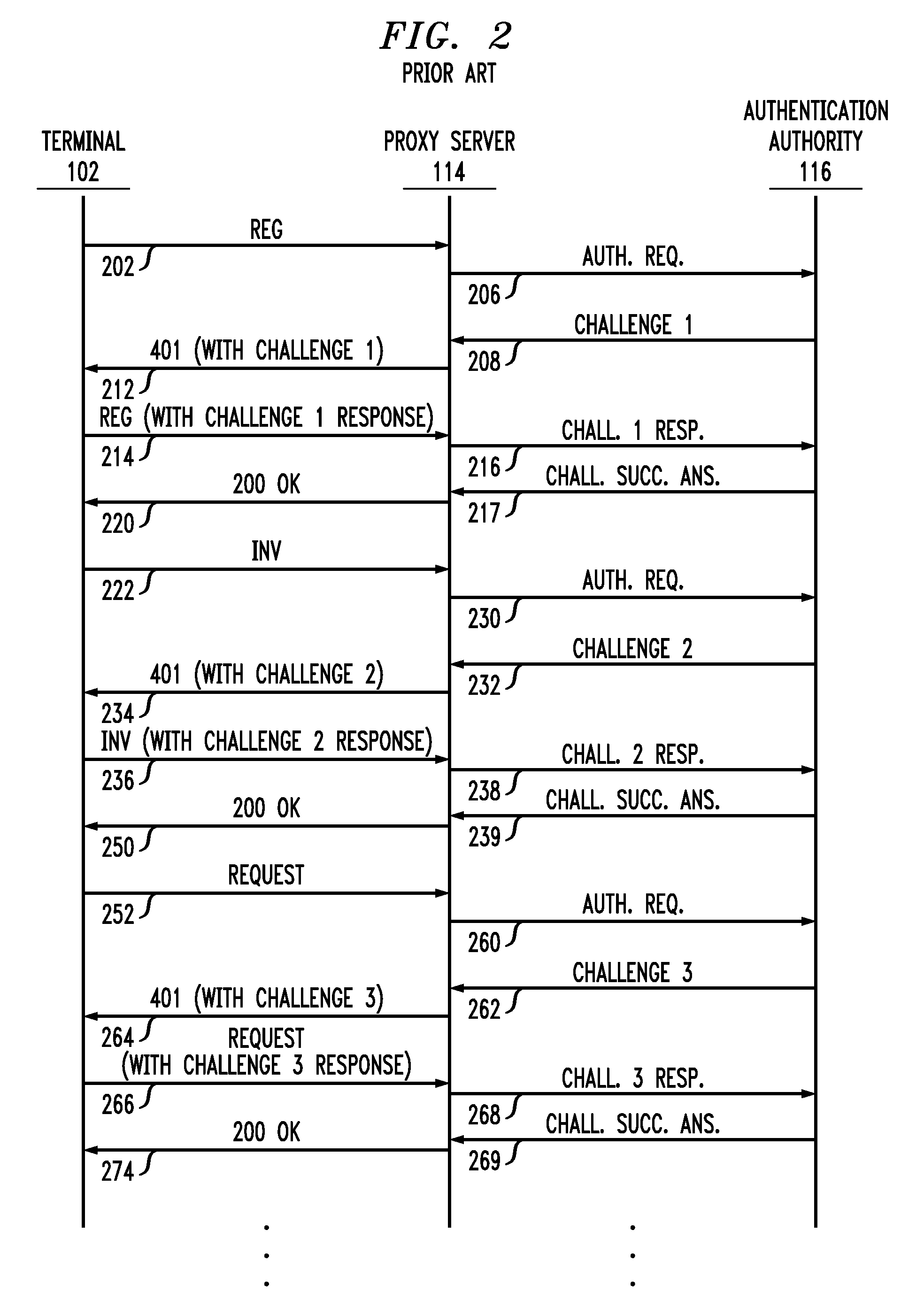SIP Signaling Without Constant Re-Authentication
a technology of transmission protocol and signaling, applied in the direction of user identity/authority verification, digital data authentication, electrical equipment, etc., can solve the problems of high authentication overhead of the system, high cost of deployment of unique certificates on every client device, and placing administrative burden on the customer, so as to avoid broken, stale, pirated, and stale requests. the effect of authenticating every reques
- Summary
- Abstract
- Description
- Claims
- Application Information
AI Technical Summary
Benefits of technology
Problems solved by technology
Method used
Image
Examples
Embodiment Construction
[0019]FIG. 1 shows an illustrative communications system wherein a plurality of communication terminals 102-104 are interconnected with each other and with an authorization entity 112 by one or more networks 110. Terminals 102-104 can be any type of end-user communication devices, such as cell phones, personal digital assistants, Voice over Internet Protocol (VoIP) telephones, personal computers, etc. Or, they can be any type of servers, such as web page servers, email servers, instant messaging (IM) servers, database servers, gateway caches, etc. Network(s) 110 can comprise any type of networks, such as local area networks (LANs), wide area networks (e.g., the Internet), Asynchronous Transfer Mode (ATM) networks, etc.
[0020]Authentication entity 112 is any entity that authenticates the identity of users of terminals 102-104. In this illustrative example, authentication entity 112 comprises a proxy server 114 and an authentication authority 116. Proxy server 114 is a server that serv...
PUM
 Login to View More
Login to View More Abstract
Description
Claims
Application Information
 Login to View More
Login to View More - Generate Ideas
- Intellectual Property
- Life Sciences
- Materials
- Tech Scout
- Unparalleled Data Quality
- Higher Quality Content
- 60% Fewer Hallucinations
Browse by: Latest US Patents, China's latest patents, Technical Efficacy Thesaurus, Application Domain, Technology Topic, Popular Technical Reports.
© 2025 PatSnap. All rights reserved.Legal|Privacy policy|Modern Slavery Act Transparency Statement|Sitemap|About US| Contact US: help@patsnap.com



